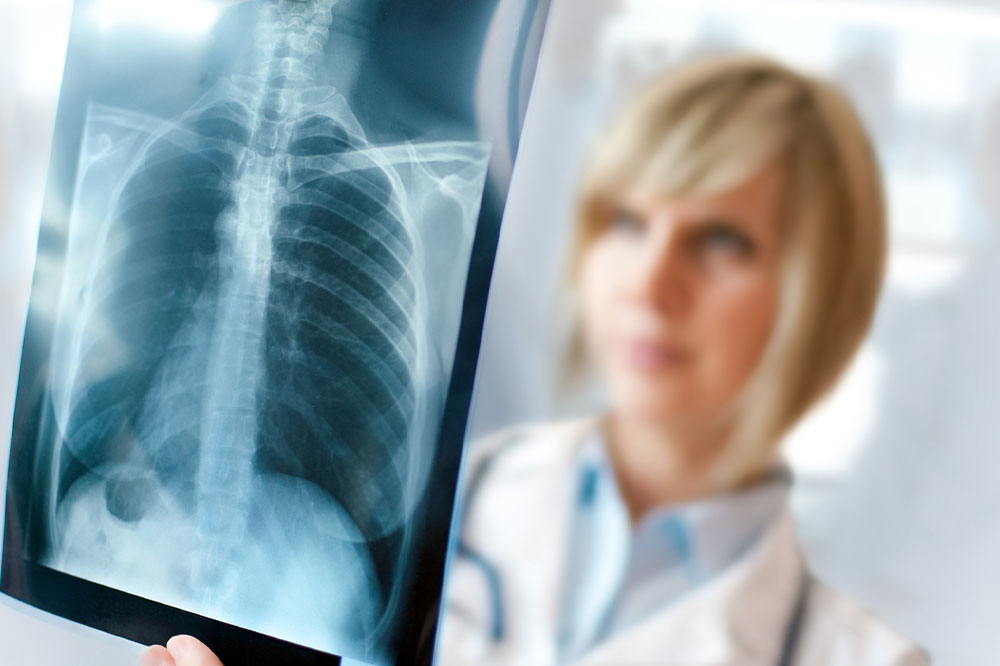
NSCLC – Causes, symptoms, diagnosis, and management
Non-small cell lung cancer (NSCLC) accounts for nearly 85% of all lung cancer cases. NSCLC is an umbrella term covering three carcinomas: adenocarcinoma, squamous cell carcinoma, and large cell carcinoma. It is a slow-progressing cancer that has no cure. But with early diagnosis and prompt treatment, it is still possible to improve one’s outlook in the long run. Here are the key things one should know about NSCLC lung cancer.
Causes and risk factors
NSCLC lung cancer can be triggered by either one or a combination of the following:
Exposure to pollution
Inhaling harmful particulates in the air can damage the lungs’ cells and increase the risk of chronic respiratory disorders. The list of pollutants includes fumes, industrial exhaust, wildfires, etc. Certain unhealthy lifestyle habits can also have the same effect.
Genetic risk
People who inherit faulty genetic codes and have a family history of respiratory problems are at an elevated risk. Genetic changes are one of the biggest concerns associated with several types of cancer. Doctors recommend regular screening for those with a family history of respiratory problems, especially among immediate relatives.
Industrial chemicals
Asbestos, a common compound for creating fireproof insulation, is a dangerous inhalant. It releases fumes that irritate the lungs and affect healthy air sacs that store freshly inhaled oxygen. This affects a person’s breathing capacity. Fumes from materials like radon, chemical solvents used for industrial purposes, and general exposure to hazardous substances also increase cancer risk.
Signs and symptoms
Discomforts of lung cancer often develop slowly as the affected cells begin to mutate in the respiratory sacks. A few examples include the following:
Chest pain
Persistent pain in the chest is among the first noticeable troubles with developing NSCLC. Unlike most other pains, it develops gradually and worsens as cancer spreads.
Cough
A persistent cough that does not go away even if one is not suffering from a cold or flu could signify respiratory failure. As the condition progress, one might also notice blood in the sputum.
Lower physical fitness
A sharp drop in physical fitness without changes in daily nutrition is a sign of NSCLC lung cancer. This symptom is often coupled with the loss of appetite.
Swelling and breathing issues
Breathlessness, wheezing, a hoarse voice due to inflammation, and trouble swallowing foods are all common indicators of developing respiratory failure.
Diagnosis
In many cases, the symptoms overlap with other known health complications, making diagnosis tricky for doctors. Here are a few approved tests for detecting NSCLC in various stages:
Imaging tests
Computed tomography (CT) scans, magnetic resource imaging (MRI) scans, and positron emission technology (PET) scans are suggested for diagnosing the prevalence of cancer cells.
Biopsy
A biopsy is conducted if imaging tests confirm the presence of abnormal cells. Here, doctors extract a small sample of tissue from the chest cavity using a special needle. The tissue is evaluated in the lab to confirm the type and severity of the cancer.
Treatments
Early diagnosis of NSCLC enables doctors to surgically remove the infected cells before they metastasize and spread to other nearby organs or affect the lymph nodes. If cancer has already progressed to the lymph nodes, several therapies can help manage it to some extent.
A combination of radiotherapy, chemotherapy, targeted therapy, and immunotherapy is suggested as the first course of treatment to manage multiple stages of NSCLC. Radiation therapy involves using high-energy radiation to destroy the cancerous cells before they spread. It is usually suggested for cancers that have not yet metastasized. Chemotherapy is done by administering treatments that can break down cancer cells without using high-energy radiation. Targeted therapy identifies and kills specific cancer cells using treatments engineered for the purpose.
For severe end stages of NSCLC lung cancer, oncologists suggest immunotherapy in combination with any of the therapies mentioned above to manage the symptoms better. Immunotherapy triggers an immune response from the body to kill the cancer cells without excess health intervention.




